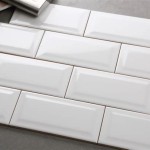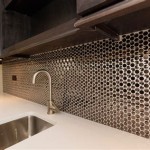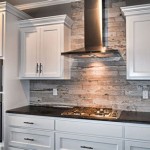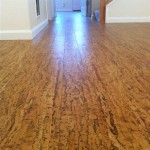Painting Your Bathroom Tiles: A Step-by-Step Design Guide
Bathroom renovations can be expensive and time-consuming. However, a cost-effective alternative to a full remodel is painting the existing bathroom tiles. This process can dramatically alter the room's aesthetic, providing a refreshed look without the extensive demolition and installation costs. While not as durable as new tiles, a properly executed paint job can last for several years with appropriate care and maintenance. This article will provide a detailed, step-by-step guide to painting bathroom tiles, focusing on optimizing both the appearance and longevity of the finished project.
Key Considerations Before Beginning
Before embarking on the painting project, several factors must be carefully considered. The type of tile, the existing condition of the surface, and the expected level of use will all influence the choice of paint and application techniques. Glossy, non-porous tiles will require more extensive preparation than matte, porous tiles. Similarly, tiles in high-moisture areas, such as the shower enclosure, will necessitate a more durable and waterproof paint system. Proper ventilation is crucial throughout the entire process, as the paints, primers, and cleaners used can emit potentially harmful fumes.
Assessing the existing condition of the tiles is paramount. Any cracked, loose, or damaged tiles must be repaired or replaced before painting. Grout lines should be thoroughly cleaned and any missing or deteriorated grout should be repaired. Failing to address these issues beforehand will compromise the integrity and appearance of the finished paint job. It is also essential to consider the existing color scheme of the bathroom. While painting offers an opportunity for a complete transformation, it is important to choose colors that complement the existing fixtures, flooring, and décor. Small sample patches should be tested in an inconspicuous area to ensure the color is satisfactory under the bathroom's lighting conditions.
Finally, it is important to manage expectations. While painting tiles can significantly improve their appearance, it is not a permanent solution. The paint will eventually wear down, particularly in high-traffic areas or areas exposed to frequent moisture. Regular cleaning and maintenance are essential to prolong the life of the paint job. Furthermore, painted tiles may not achieve the exact same look and feel as professionally installed tiles. However, with careful preparation and execution, painting can provide a cost-effective and visually pleasing alternative to a full bathroom remodel.
Materials and Tools Required
A successful tile painting project requires a selection of appropriate materials and tools. This includes cleaning supplies for preparation, tools for surface repair, and, of course, the chosen paint system. Investing in quality products will contribute significantly to the project's overall success and longevity.
Here's a comprehensive list:
*Cleaning Supplies: Mild detergent, TSP (trisodium phosphate) cleaner (optional for heavily soiled surfaces), scrub brushes, sponges, clean cloths, and a mold and mildew cleaner (if necessary).
*Surface Repair: Grout removal tool, grout float, pre-mixed grout, tile adhesive (for loose tiles), sandpaper (various grits, from coarse to fine), and patching compound (for damaged tiles).
*Painting Supplies: Painter's tape, plastic sheeting or drop cloths, high-quality epoxy primer formulated for tile, tile paint (epoxy or polyurethane-based), paint rollers (foam or microfiber), paint brushes (angled for grout lines and edges), paint tray, stirring sticks, and safety glasses and gloves.
*Safety Equipment: Respirator or face mask (for use with epoxy primer and paint), safety glasses, and gloves. Ensuring adequate ventilation is crucial.
The choice of paint is particularly important. Epoxy-based paints and two-part polyurethane paints are generally considered the most durable options for bathroom tiles, offering superior resistance to moisture, chemicals, and wear. These paints form a hard, non-porous surface that is easy to clean and maintain. However, they can be more expensive and require careful mixing and application. It is crucial to carefully read and follow the manufacturer's instructions for the specific paint chosen.
Step-by-Step Painting Process
The tile painting process can be broken down into several key stages: surface preparation, priming, painting, and sealing (optional). Each stage is critical to achieving a professional-looking and durable finish.
1. Surface Preparation: This is the most crucial step. Thoroughly clean the tiles with a mild detergent and water to remove any dirt, grease, or soap scum. For heavily soiled surfaces, use a TSP cleaner according to the manufacturer's instructions. Rinse the tiles thoroughly with clean water and allow them to dry completely. If there is mold or mildew present, clean the affected areas with a mold and mildew cleaner, following the product's instructions. Remove any loose or flaking grout using a grout removal tool. Repair any damaged tiles using tile adhesive. Fill any cracks or holes in the tiles with patching compound and allow it to dry completely.
2. Sanding: Once the tiles are clean and dry, lightly sand the surface using fine-grit sandpaper to create a slightly rough texture that will help the primer adhere. Pay particular attention to glossy tiles, as they tend to be less porous. After sanding, thoroughly remove any sanding dust with a clean, damp cloth. Use painter's tape to protect surrounding surfaces, such as the bathtub, shower enclosure, sink, and trim. Cover the floor with plastic sheeting or drop cloths to protect it from paint splatters.
3. Priming: Apply a thin, even coat of epoxy primer specifically formulated for tile. This primer will create a strong bond between the tile surface and the paint. Use a brush to apply primer to the grout lines and edges, and a roller to apply primer to the larger tile surfaces. Allow the primer to dry completely according to the manufacturer's instructions. Some primers may require multiple coats. Ensure adequate ventilation during the priming process, and wear a respirator or face mask to protect yourself from fumes.
4. Painting: Once the primer is completely dry, apply the first coat of tile paint. Use a brush to paint the grout lines and edges, and a roller to paint the larger tile surfaces. Apply the paint in thin, even coats to avoid drips and runs. Allow the first coat of paint to dry completely according to the manufacturer's instructions. Apply a second coat of paint for optimal coverage and durability. Again, allow the paint to dry completely before proceeding.
5. Sealing (Optional): For added protection, particularly in high-moisture areas, consider applying a clear sealant specifically designed for painted surfaces. This will help to protect the paint from water damage and wear. Apply the sealant according to the manufacturer's instructions. Allow the sealant to dry completely before using the bathroom. Carefully remove the painter's tape, being cautious not to peel off any paint. Clean up any paint splatters and dispose of used materials properly.
6. Curing Time: Allow the paint to fully cure before regular use of the bathroom. Curing times vary depending on the type of paint used, but generally, it is recommended to wait at least 24-72 hours before exposing the painted tiles to moisture or heavy use.
Maintaining Painted Tiles
Proper maintenance is crucial to prolonging the life of painted bathroom tiles. Avoid using harsh abrasive cleaners, as these can scratch or damage the paint surface. Instead, use a mild detergent and a soft cloth or sponge to clean the tiles regularly. Wipe up any spills or splatters immediately to prevent staining or discoloration. Avoid using scouring pads or abrasive brushes, as these can also damage the paint. Replace any damaged or deteriorated grout promptly to prevent water from seeping behind the tiles. Regularly inspect the painted surface for any signs of wear or damage, such as chips, cracks, or peeling paint. Touch up any damaged areas promptly to prevent the problem from worsening.
In high-moisture areas, consider using a squeegee to remove excess water from the tiles after each use. This will help to prevent the buildup of mold and mildew, and it will also prolong the life of the paint job. Ensure adequate ventilation in the bathroom to reduce moisture levels. Open a window or use an exhaust fan during and after showers or baths. By following these maintenance tips, it is possible to maintain the appearance and durability of painted bathroom tiles for an extended period.

How To Paint Bathroom Tiles A Step By Guide Ideal Home

How To Paint Bathroom Tiles A Step By Guide Ideal Home

Learn How To Paint Tiles Rubi Blog Usa

How To Paint Tiles The Right Way Making Home

Beginner S Guide To Painting Bathroom Tiles

How To Do Tile Painting 14 Steps With Pictures Wikihow

Update Your Bathroom Tiles With Dulux Renovation Range Paint

How To Paint Shower Tile So It Won T L Porch Daydreamer

How To Paint Tile Floor Angela Marie Made

How To Paint Bathroom Wall Tiles Dulux Renovation Range
Related Posts








